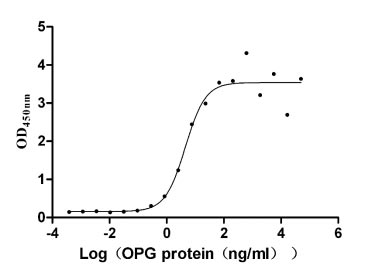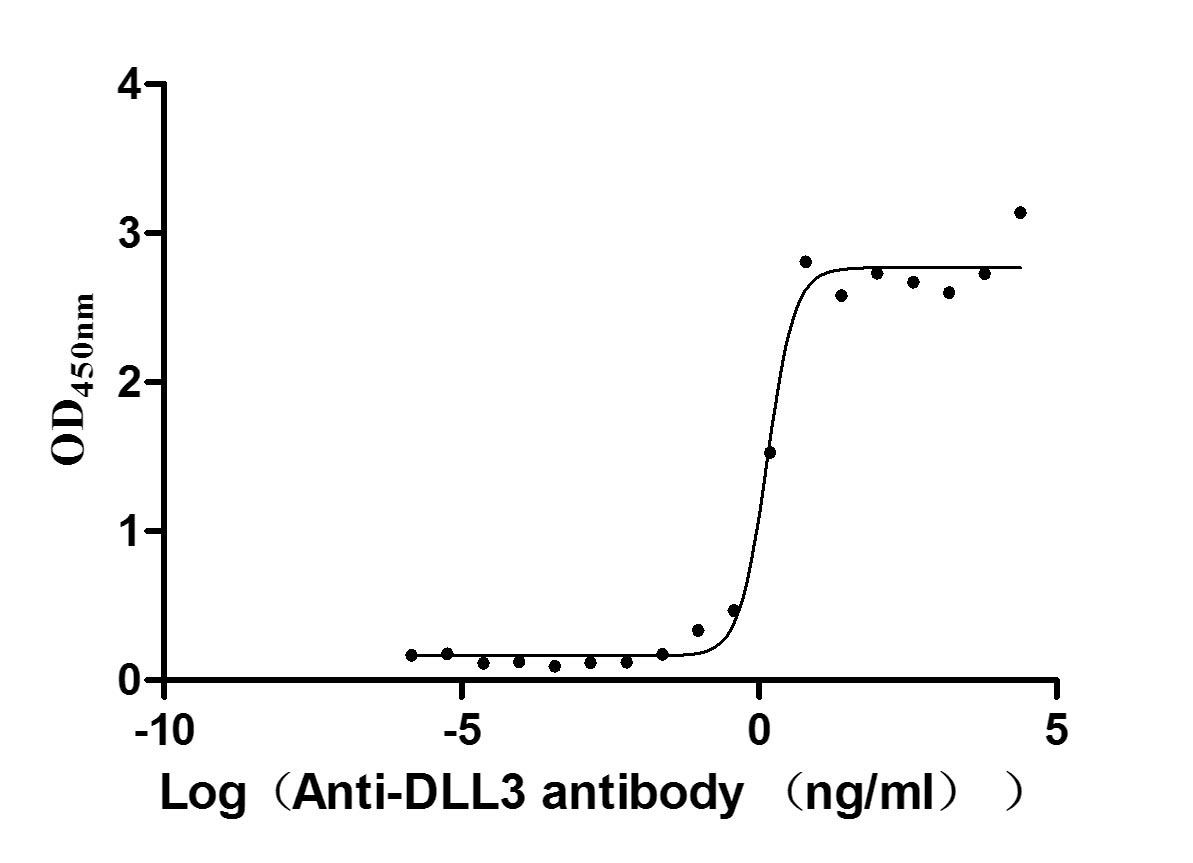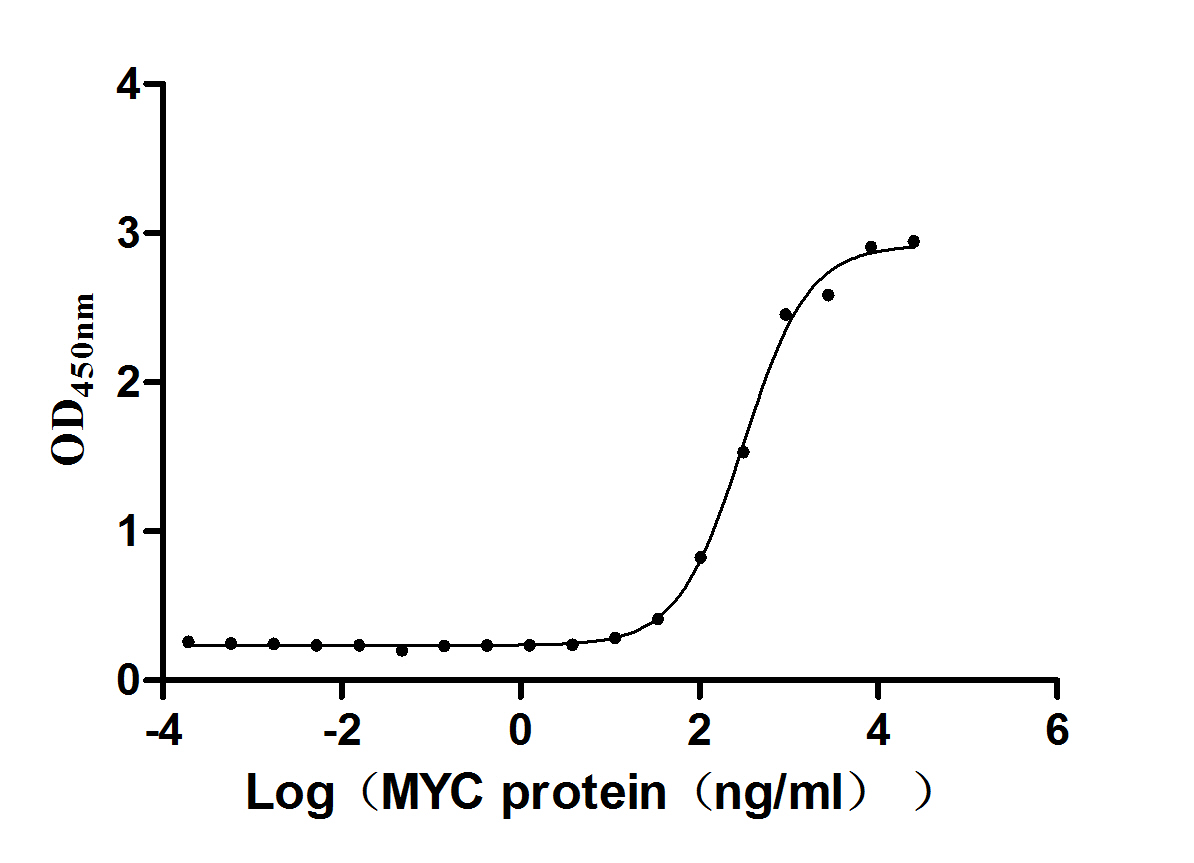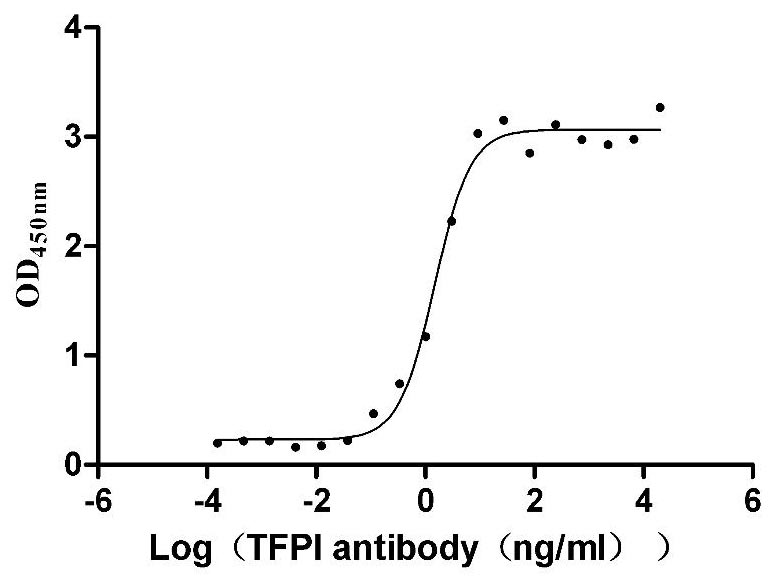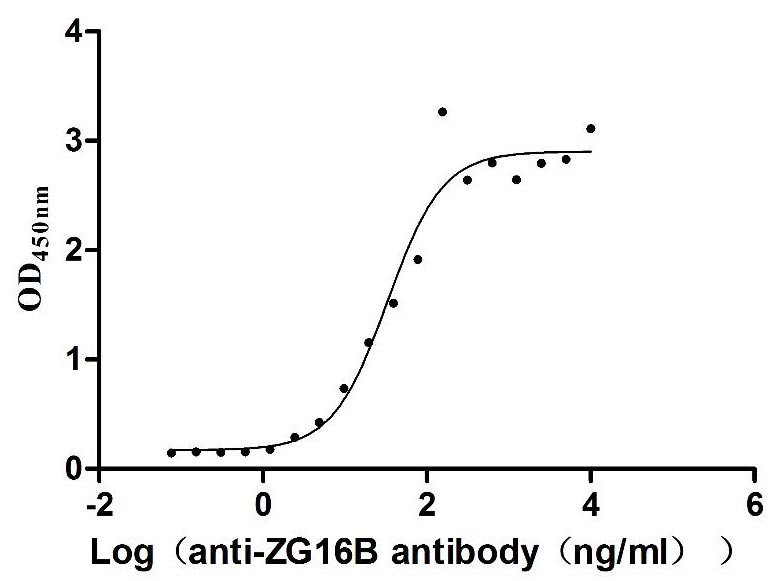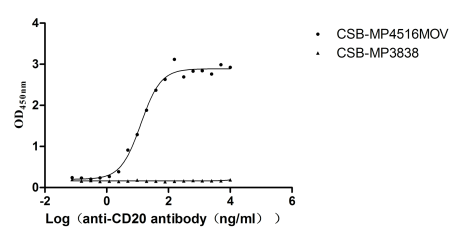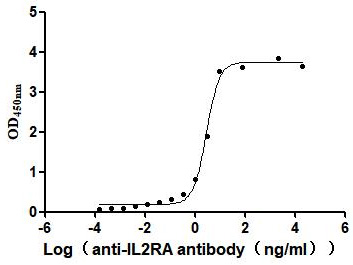Recombinant Arabidopsis thaliana CBL-interacting serine/threonine-protein kinase 3 (CIPK3)
-
中文名稱(chēng):Recombinant Arabidopsis thaliana CBL-interacting serine/threonine-protein kinase 3(CIPK3)
-
貨號(hào):CSB-YP648860DOA
-
規(guī)格:
-
來(lái)源:Yeast
-
其他:
-
中文名稱(chēng):Recombinant Arabidopsis thaliana CBL-interacting serine/threonine-protein kinase 3(CIPK3)
-
貨號(hào):CSB-EP648860DOA
-
規(guī)格:
-
來(lái)源:E.coli
-
其他:
-
中文名稱(chēng):Recombinant Arabidopsis thaliana CBL-interacting serine/threonine-protein kinase 3(CIPK3)
-
貨號(hào):CSB-EP648860DOA-B
-
規(guī)格:
-
來(lái)源:E.coli
-
共軛:Avi-tag Biotinylated
E. coli biotin ligase (BirA) is highly specific in covalently attaching biotin to the 15 amino acid AviTag peptide. This recombinant protein was biotinylated in vivo by AviTag-BirA technology, which method is BriA catalyzes amide linkage between the biotin and the specific lysine of the AviTag.
-
其他:
-
中文名稱(chēng):Recombinant Arabidopsis thaliana CBL-interacting serine/threonine-protein kinase 3(CIPK3)
-
貨號(hào):CSB-BP648860DOA
-
規(guī)格:
-
來(lái)源:Baculovirus
-
其他:
-
中文名稱(chēng):Recombinant Arabidopsis thaliana CBL-interacting serine/threonine-protein kinase 3(CIPK3)
-
貨號(hào):CSB-MP648860DOA
-
規(guī)格:
-
來(lái)源:Mammalian cell
-
其他:
產(chǎn)品詳情
-
純度:>85% (SDS-PAGE)
-
基因名:CIPK3
-
Uniprot No.:
-
別名:CIPK3; PKS12; SnRK3.17; At2g26980; T20P8.3CBL-interacting serine/threonine-protein kinase 3; EC 2.7.11.1; SNF1-related kinase 3.17; SOS2-like protein kinase PKS12
-
種屬:Arabidopsis thaliana (Mouse-ear cress)
-
蛋白長(zhǎng)度:full length protein
-
表達(dá)區(qū)域:1-441
-
氨基酸序列MNRRQQVKRR VGKYEVGRTI GEGTFAKVKF ARNSETGEPV ALKILDKEKV LKHKMAEQIR REIATMKLIK HPNVVQLYEV MASKTKIFII LEYVTGGELF DKIVNDGRMK EDEARRYFQQ LIHAVDYCHS RGVYHRDLKP ENLLLDSYGN LKISDFGLSA LSQQVRDDGL LHTSCGTPNY VAPEVLNDRG YDGATADMWS CGVVLYVLLA GYLPFDDSNL MNLYKKISSG EFNCPPWLSL GAMKLITRIL DPNPMTRVTP QEVFEDEWFK KDYKPPVFEE RDDSNMDDID AVFKDSEEHL VTEKREEQPA AINAFEIISM SRGLNLENLF DPEQEFKRET RITLRGGANE IIEKIEEAAK PLGFDVQKKN YKMRLENVKA GRKGNLNVAT EIFQVAPSLH MVQVSKSKGD TLEFHKFYKK LSNSLEQVVW TNNEVKKETA K
-
蛋白標(biāo)簽:Tag?type?will?be?determined?during?the?manufacturing?process.
The tag type will be determined during production process. If you have specified tag type, please tell us and we will develop the specified tag preferentially. -
產(chǎn)品提供形式:Lyophilized powder
Note: We will preferentially ship the format that we have in stock, however, if you have any special requirement for the format, please remark your requirement when placing the order, we will prepare according to your demand. -
復(fù)溶:We recommend that this vial be briefly centrifuged prior to opening to bring the contents to the bottom. Please reconstitute protein in deionized sterile water to a concentration of 0.1-1.0 mg/mL.We recommend to add 5-50% of glycerol (final concentration) and aliquot for long-term storage at -20℃/-80℃. Our default final concentration of glycerol is 50%. Customers could use it as reference.
-
儲(chǔ)存條件:Store at -20°C/-80°C upon receipt, aliquoting is necessary for mutiple use. Avoid repeated freeze-thaw cycles.
-
保質(zhì)期:The shelf life is related to many factors, storage state, buffer ingredients, storage temperature and the stability of the protein itself.
Generally, the shelf life of liquid form is 6 months at -20°C/-80°C. The shelf life of lyophilized form is 12 months at -20°C/-80°C. -
貨期:Delivery time may differ from different purchasing way or location, please kindly consult your local distributors for specific delivery time.Note: All of our proteins are default shipped with normal blue ice packs, if you request to ship with dry ice, please communicate with us in advance and extra fees will be charged.
-
注意事項(xiàng):Repeated freezing and thawing is not recommended. Store working aliquots at 4°C for up to one week.
-
Datasheet :Please contact us to get it.
靶點(diǎn)詳情
-
功能:Involved in the resistance to some abiotic stresses (e.g. high salt, hyperosmotic stress) in young seedlings, by regulating the expression of several stress-inducible genes (cold- and salt-induced genes but not drought-responsive genes). Required for the ABA response during germination. CIPK serine-threonine protein kinases interact with CBL proteins. Binding of a CBL protein to the regulatory NAF domain of CIPK protein lead to the activation of the kinase in a calcium-dependent manner. The CBL9/CIPK3 complex acts in the regulation of abscisic acid response in seed germination.
-
基因功能參考文獻(xiàn):
- The CBL9-CIPK3-ABR1 pathway functions to regulate seed germination and ABA dependent physiological processes in Arabidopsis. PMID: 27964784
- CBL9 and CIPK3 act together in the same pathway for regulating abscisic acid responses in Arabidopsis. PMID: 19825536
-
蛋白家族:Protein kinase superfamily, CAMK Ser/Thr protein kinase family, SNF1 subfamily
-
組織特異性:Mostly expressed in germinating seeds and young seedlings. Detected at low levels in roots, stems, leaves and flowers.
-
數(shù)據(jù)庫(kù)鏈接:
Most popular with customers
-
Recombinant Human Tumor necrosis factor receptor superfamily member 11B (TNFRSF11B) (Active)
Express system: Mammalian cell
Species: Homo sapiens (Human)
-
Recombinant Human Delta-like protein 3 (DLL3), partial (Active)
Express system: Mammalian cell
Species: Homo sapiens (Human)
-
Recombinant Human papillomavirus type 16 Protein E7 (E7) (Active)
Express system: E.coli
Species: Human papillomavirus type 16
-
Recombinant Human Tissue factor pathway inhibitor (TFPI), partial (Active)
Express system: Mammalian cell
Species: Homo sapiens (Human)
-
Recombinant Human Pancreatic adenocarcinoma up-regulated factor (ZG16B) (Active)
Express system: Mammalian cell
Species: Homo sapiens (Human)
-
Recombinant Macaca fascicularis Membrane spanning 4-domains A1 (MS4A1)-VLPs (Active)
Express system: Mammalian cell
Species: Macaca fascicularis (Crab-eating macaque) (Cynomolgus monkey)
-
Recombinant Human C-type lectin domain family 4 member C (CLEC4C), partial (Active)
Express system: Mammalian cell
Species: Homo sapiens (Human)
-
Recombinant Human Interleukin-2 receptor subunit alpha (IL2RA), partial (Active)
Express system: Mammalian cell
Species: Homo sapiens (Human)


